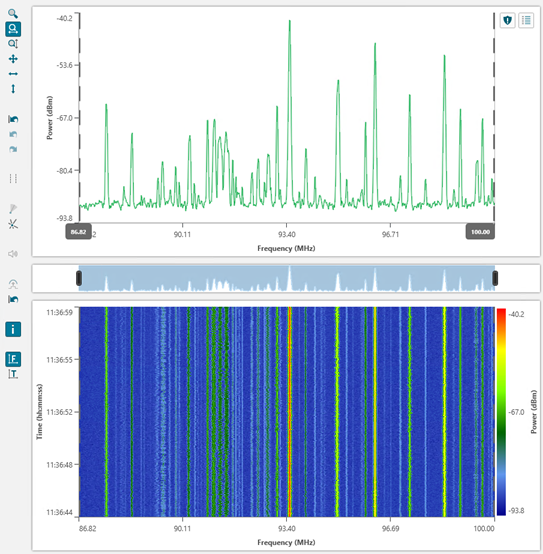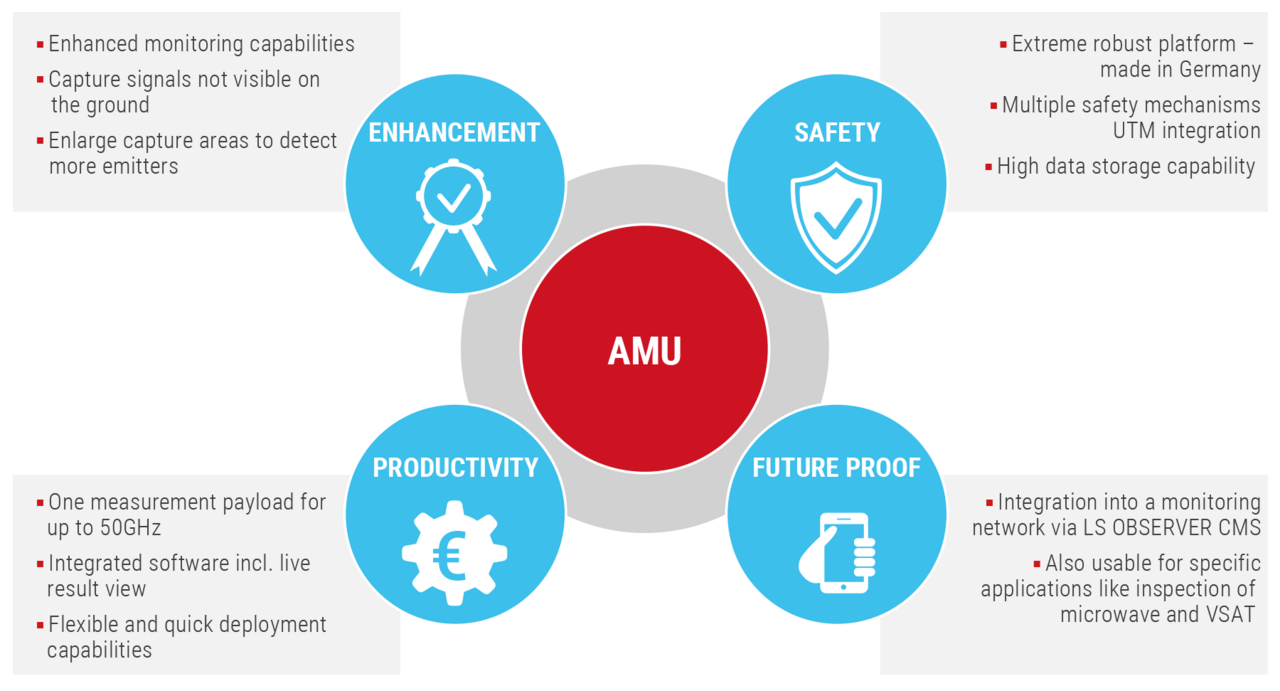Drone-based Spectrum Monitoring
Add a new dimension in your spectrum monitoring tool with an “eye in the sky”
Monitoring devices are usually positioned on high buildings or other heights or alternatively are mounted on fixed or transportable masts. For ad-hoc monitoring to protect critical sites or major events this is not always practical and feasible. The military, too, often have trouble finding ad-hoc suitable locations to place monitoring devices in areas of operations.
With drone-based monitoring there is no such headache of finding a suitable location for your monitoring device. In addition, the drone captures signals which are not detectable from certain monitoring sites, but only at certain heights, where the drone can fly and thus provide more accurate results.
Our tethered drone system provides permanent power supply when monitoring over a longer time period is needed. The drone is also fitted with a stable downlink communication via Ethernet cable. The complete unmanned drone monitoring system can be easily transported on a pick-up and deployed quickly.
Drone-based spectrum monitoring applies for public and homeland security
Key benefits of our LS OBSERVER AMU
Because certain signals are not detectable by conventional spectrum monitoring solutions
Our typical measurement applications with the Airborne Monitoring Unit

With the AMU you can perform various frequency analysis like spectrum scan or in fixed frequency mode (FFM), most of them according to ITU.R SM. 377.
The spectrum scan can either be displayed in the frequency or time domain. In the frequency domain the live measurements of a certain monitoring station are displayed in an interactive spectrogram (Level vs. frequency) and a linked waterfall chart. The operator can easily zoom in and out, a mouse-over with relevant information for each position in the chart is displayed, the measurements can be moved by dragging it with the mouse and each step can be undone or redone.
The fixed frequency mode (FFM) of LS OBSERVER CMS provides measurements within the real-time bandwidth of the receiver for a fixed center frequency. This mode is used by different measurement modes like e.g. demodulation and for IQ recording (depending on selected AMU version)
Depending on the selected receiver, the AMU offers measurement of the following RF signal parameters:
- Power measurements in dBm
- Field strength measurements in dBµV/m
- Bandwidth measurements with x dB or β% method (according to ITU-R SM. 443)
- Modulation measurements for AM,FM and PM signals ( e.g. frequency deviation, modulation depth)
